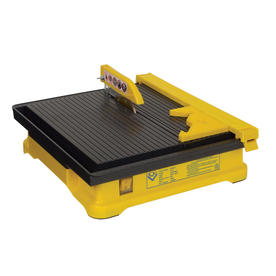Mark42
Fleet Admiral
- Joined
- Oct 8, 2003
- Messages
- 9,334
In June of 2008 we replaced sheet vinyl flooring in the kitchen with ceramic floor tile. I was really reluctant to do tiles in the kitchen without adding extra layer of plywood because I know from experience that tiles come loose and grout falls out. But I did it without the extra ply anyway.
These are large tiles, about 16x16 and they have held up very well. Especially the grout, which I chose a basic "dirt" color (no kidding, I found the dirtiest stained grout in the house and matched the kitchen grout to that color so it will never look dirty). S0 far none of the full size tiles have cracked. Only two tiles cut into "L" shapes with a narrow 2" leg cracked at the bend. And they are not in a place where they are obvious.
The sub floor is APA rated 23/32" and is specific to flooring with the APA label "sturdy floor 24 OC" specification, although the joists are 16" on center glued to the joists. There was a 1/4" layer of sanded ply on top that the sheet vinyl was glued to. When the vinyl was removed, all glue was scraped off (ugg) and 2.5" screws were run through to the joists every 10 inches, then 1.25" screws were used on a 6" grid to ensure the 1/4" ply was tight to the sub floor. The 1/4" ply was not removed because all the cabinets were installed on top of it.
From below, additional cross bracing was installed in the way of 2x10 cut into sections that fit between the joists, and screwed and glued (using liquid nails) and 2x2's in the corners for extra mounting support. This helps to distribute the load from one joist to the adjoining joists and made a HUGE difference in floor deflection when I measured from joist to basement floor while wife jumped around on top.
Normally I would have glued down another layer of 1/2" or 3/4" ply, but I didn't feel like taking out all the cabinets to do this.
With two young kids in the house, always running and jumping, I am surprised that the tiles or the grout has not cracked or broken. If I jump in the center of the kitchen, the free standing stove will shake. So there is a bit of flex in the floor.
I am wondering why its held up so well. No loose grout, no cracked or loose tiles (laid in thinset mortar with plasticizers). If these new mortars and grouts can take flexing without cracking, that is amazing. I am totally impressed with the performance of the products I used.
Just wondering if this is typical results using the plasticized mortar and grouts available today. They sure worked well for me.

These are large tiles, about 16x16 and they have held up very well. Especially the grout, which I chose a basic "dirt" color (no kidding, I found the dirtiest stained grout in the house and matched the kitchen grout to that color so it will never look dirty). S0 far none of the full size tiles have cracked. Only two tiles cut into "L" shapes with a narrow 2" leg cracked at the bend. And they are not in a place where they are obvious.
The sub floor is APA rated 23/32" and is specific to flooring with the APA label "sturdy floor 24 OC" specification, although the joists are 16" on center glued to the joists. There was a 1/4" layer of sanded ply on top that the sheet vinyl was glued to. When the vinyl was removed, all glue was scraped off (ugg) and 2.5" screws were run through to the joists every 10 inches, then 1.25" screws were used on a 6" grid to ensure the 1/4" ply was tight to the sub floor. The 1/4" ply was not removed because all the cabinets were installed on top of it.
From below, additional cross bracing was installed in the way of 2x10 cut into sections that fit between the joists, and screwed and glued (using liquid nails) and 2x2's in the corners for extra mounting support. This helps to distribute the load from one joist to the adjoining joists and made a HUGE difference in floor deflection when I measured from joist to basement floor while wife jumped around on top.
Normally I would have glued down another layer of 1/2" or 3/4" ply, but I didn't feel like taking out all the cabinets to do this.
With two young kids in the house, always running and jumping, I am surprised that the tiles or the grout has not cracked or broken. If I jump in the center of the kitchen, the free standing stove will shake. So there is a bit of flex in the floor.
I am wondering why its held up so well. No loose grout, no cracked or loose tiles (laid in thinset mortar with plasticizers). If these new mortars and grouts can take flexing without cracking, that is amazing. I am totally impressed with the performance of the products I used.
Just wondering if this is typical results using the plasticized mortar and grouts available today. They sure worked well for me.






















